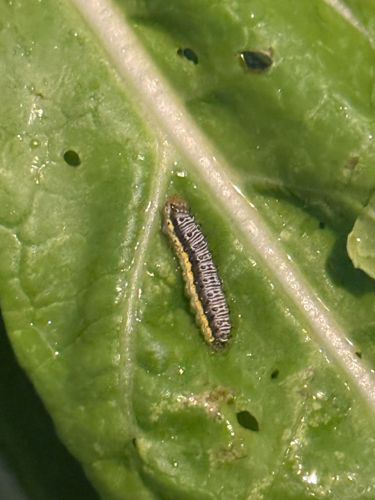Cabbage White Butterfly larva (Cabbage Worm)
Scientific Name: Pieris rapae (larva stage)
Order & Family: Lepidoptera, Pieridae
Size: Larvae typically grow up to 30-35 mm (1.2-1.4 inches) in length.

Natural Habitat
Gardens, agricultural fields, and any areas where host plants are common. They are found worldwide.
Diet & Feeding
It primarily feeds on plants in the family Brassicaceae (cruciferous vegetables), such as cabbage, broccoli, cauliflower, kale, collards, and Brussels sprouts. It also feeds on other plants like nasturtium and mignonette.
Behavior Patterns
The larva molts several times as it grows, feeding continuously. When mature, it pupates, typically forming a chrysalis on a host plant or nearby surface. The adult butterfly is a pollinator.
Risks & Benefits
Risk: Significant pest of cruciferous crops, causing feeding damage (holes in leaves, defoliation) that can lead to reduced yield and aesthetic damage, especially in commercial agriculture and home gardens. Benefits: The adult butterfly is a pollinator, though not as specialized or effective as some other insect pollinators. They are also a food source for various predators and parasites, playing a role in the food chain.
Identified on: 8/22/2025